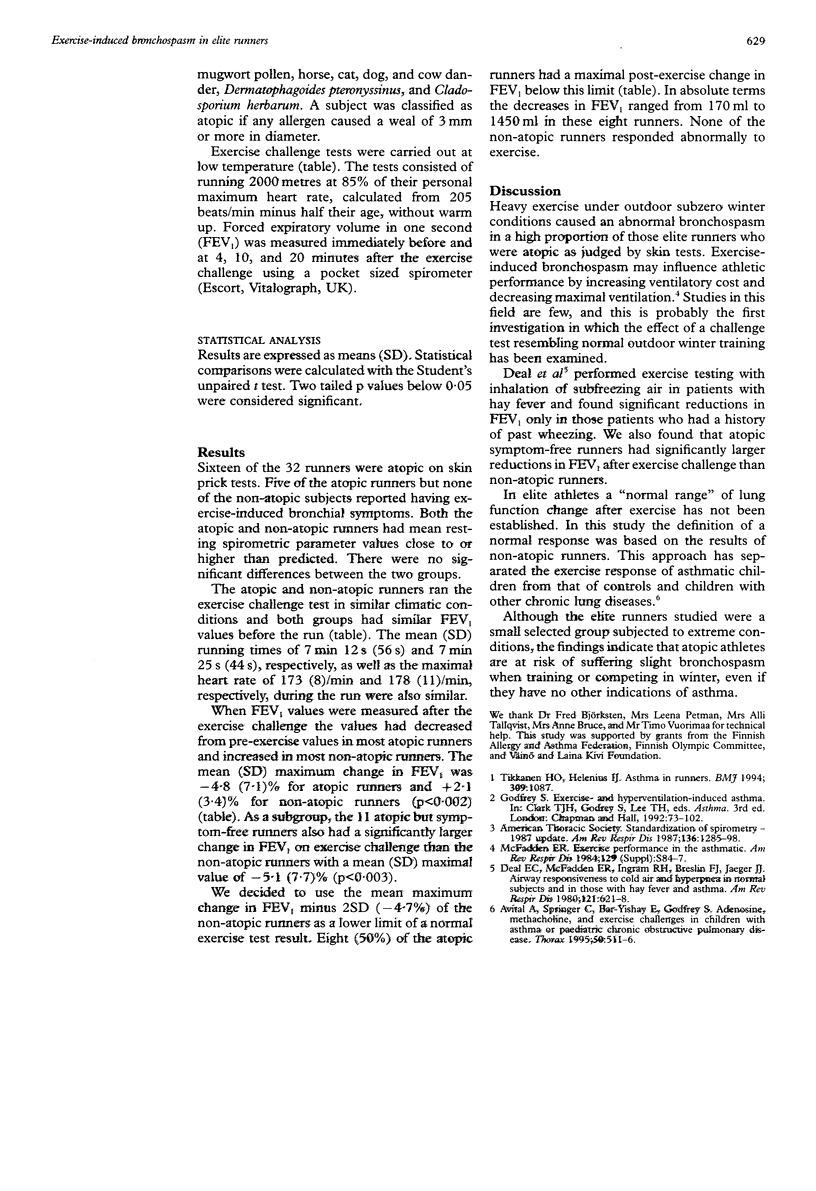Abstract
BACKGROUND: Healthy elite runners often report bronchial symptoms when training in subzero temperatures. The occurrence and causes of exercise-induced bronchospasm after heavy exercise in cold air were investigated in elite runners. METHODS: Thirty two non-asthmatic runners, mostly from Finnish national teams, volunteered to take part in the study. They answered a questionnaire and were subjected at subzero temperature to a heavy exercise challenge test combined with lung function testing. RESULTS: Sixteen of the runners were atopic on skin prick tests. The mean (SD) maximal change in forced expiratory volume in one second (FEV1) after the exercise challenge was -4.8 (7.1)% in the atopic runners, and +2.1 (3.4)% in the non-atopic runners. When the mean maximal change in FEV1 minus 2SD (-4.7%) of the exercise response of the non-atopic runners was taken as the lower limit of a "normal" result, eight of the atopic runners responded abnormally. CONCLUSIONS: Heavy exercise at temperatures below zero causes bronchospasm in a high proportion of elite runners with atopy. Although the changes in lung function are mostly small, they may affect the maximal performance of atopic runners. Non-atopic runners are not affected.
Full text
PDF



